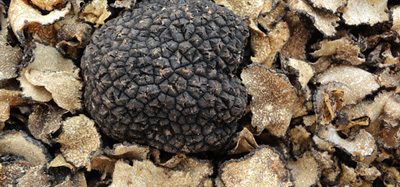Enzyme enrichment could make bread a superfood
- Like
- Digg
- Del
- Tumblr
- VKontakte
- Buffer
- Love This
- Odnoklassniki
- Meneame
- Blogger
- Amazon
- Yahoo Mail
- Gmail
- AOL
- Newsvine
- HackerNews
- Evernote
- MySpace
- Mail.ru
- Viadeo
- Line
- Comments
- Yummly
- SMS
- Viber
- Telegram
- Subscribe
- Skype
- Facebook Messenger
- Kakao
- LiveJournal
- Yammer
- Edgar
- Fintel
- Mix
- Instapaper
- Copy Link
Posted: 27 November 2020 | Joshua Minchin (New Food) | No comments yet
Via the addition of an enzyme during baking, a study has demonstrated that bread can improve blood flow and aid the vascular system.


Could bread be the next superfood?
A small addition during bread making unlocks the potential of wholegrain bread, putting it on a par with other ‘superfoods’, according to researchers.
During a clinical trial published in Clinical Nutrition, participants who ate an improved bread saw the same short-term boost to their vascular function as gained from eating blueberries – which have long been hailed as a superfood.
The team from the University of Reading and agricultural research institute Rothamsted Research, added an enzyme commonly used by the drinks industry to the bread, raising levels of micronutrient ferulic acid by more than five times.
Similar circulatory-improving compounds are found in foods such as cocoa, green tea and red wine, but the authors hope improving an everyday food, like bread, will benefit public health more widely.
Jeremy Spencer, Professor of Molecular Nutrition at the University of Reading who led the study said: “While there is a growing recognition that foods like berries or green tea have a positive benefit for human health due to the presence of polyphenols, we recognise that there are barriers for much of the population to consume amounts of these that may have a significant impact on their health.
“Our study shows that there are ways that we can subtly change the characteristics of staple foods such as bread to increase the positive micronutrients found in them.”
Significant short-term boost
Nineteen healthy, young men were selected to take part in the clinical trial and were randomly placed in groups, with one group receiving the enriched bread. These participants showed higher levels of ferulic acid and a significant short-term boost in blood flow associated with cardiovascular health.1
In order to account for differences between higher and lower fibre breads, two control groups were tested as well, with one group receiving white bread low in fibre, and one group receiving a higher fibre bread which had a non-active version of the enzyme.1
Researchers say the results demonstrate that the free ferulic acid that was in the treated bread is most likely to have accounted for an increase in blood flow.
Dr Alison Lovegrove from the Rothamsted Research Institute, said: “All wholegrain and high fibre breads contain similar contents of phenolic compounds to those present in blueberries and other superfoods, but the chemicals are tightly bound to fibre in the bread – meaning we don’t typically get the health benefits from consuming them unless eaten regularly over the long term.
“This may be one of the reasons why we see greater benefits from regular wholegrain consumption, as these compounds are slowly released in the gut.
“Processing with an enzyme to release the ferulic acid prior to bread making has changed that, effectively unlocking the goodness of the wholegrain and making it immediately available. The effect on blood flow seen in the study are really clear and show that, with a small addition, bread can be as good as blueberries for your health.”
The enzyme used is already accepted for food use and used by commercial brewers as part of a mixture of enzymes that break down the fibre during malting – so researchers hope bakers could adopt the additional ingredient soon too.
Although this research is focused on delivering benefits in bread, the researchers say the technology could also be applied to various snack foods and energy bars, which often contain wheat bran or wholemeal.
References
- www.clinicalnutritionjournal.com/article/S0261-5614(20)30391-5/fulltext
Related topics
Health & Nutrition, Ingredients, New product development (NPD), Research & development








